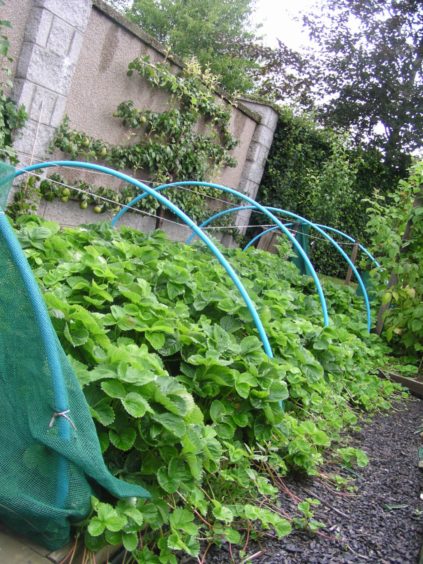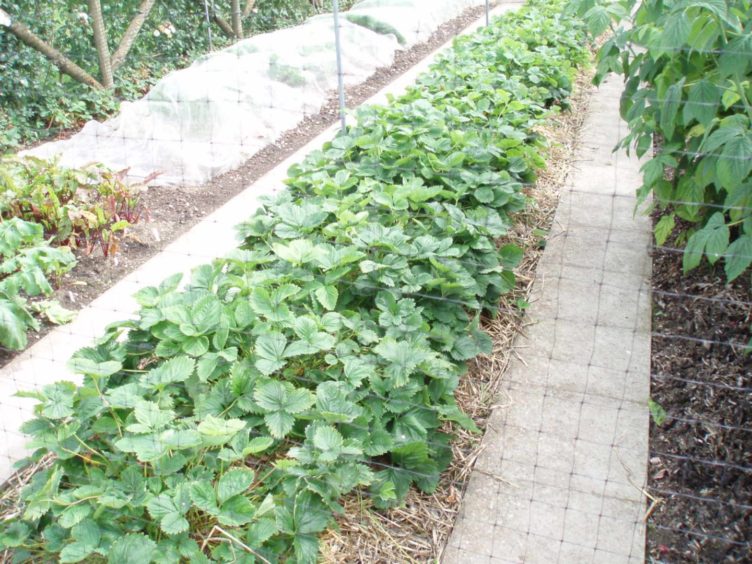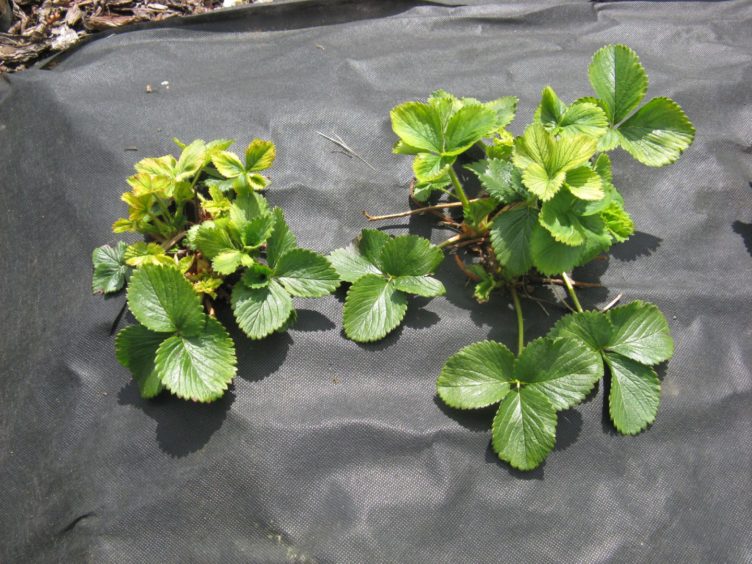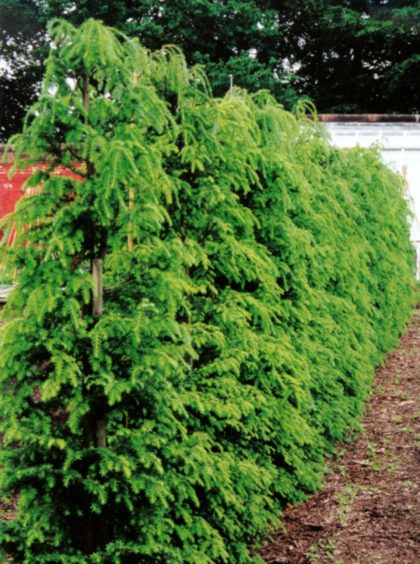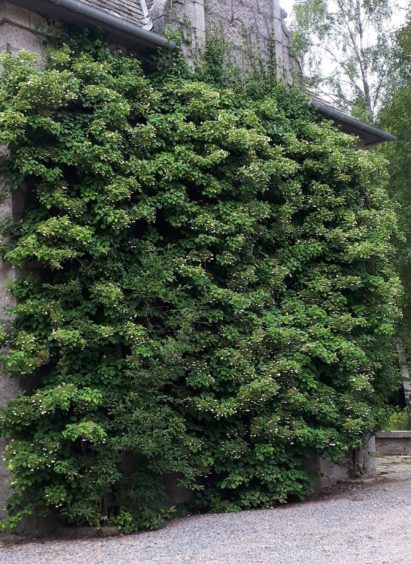As the last of the strawberries in the garden are picked, it may be decision time with respect to the future of the plants being cropped.
Unlike many of our other soft fruits like raspberries, gooseberries, red and black currants which are all woody perennials and which can crop regularly for 10 years or more, the strawberry is a herbaceous perennial with the annual growth dying back at the end of each growing season.
You can expect three or four good cropping years from one set of plants before it is advisable to start again with a set of young plants, on a fresh piece of ground.
There is no need to purchase new stock, you can propagate your new plants from the existing plants which you have been cropping, SO LONG AS these plants are clean and healthy. In other words, if the plants are suffering from disease, you may have to dispose of them and start afresh.
Growing methods
In the old days, we covered the ground between the rows with straw – some people may still do – lifting the developing trusses of young fruit out on to the top of the straw, setting them up to the light to assist ripening, helping them dry out after rain AND keeping them clean.
At the end of the picking season on large fruit farms, they went over the rows with a reaper, cutting back all the old foliage and in the process fluffing up the straw which had been beaten down as the pickers harvested the fruit. And then when the wind was blowing in the right direction, they set a light to it. The existing plants came through unharmed, any weeds were dispensed with and the burned remnant ash added marginally to the fertility of the soil.
New life
Thinking about new gardeners and those growing strawberries for the first time, now that the fruiting season is drawing to a close, the plants will start to self-propagate by producing runners – long leafless stems running flat on the ground, with an embryo plant at the tip.
In young plantations, we tend to train these runners into the row, finishing up with the planting looking like a series of mini-hedges. After a year or two, however, with more runners being produced each year, these rows become congested and more difficult to keep clean. For that reason, some gardeners prefer to remove all the runners each year to maintain gaps between the original individual plants.
Those of us who prefer to create the continuous row, arguably producing heavier crop yields, reason that the practice of renewing the strawberry patch every three to four years is more acceptable. As the runners appear from the heart of the existing plants each with that new young plantlet at the tip, after extending for about 15 to 20cm the plantlet will root into the ground but the runner tip will then continue on its way, creating yet another plantlet.
That is the time to propagate new plants, thus maintaining continuity of supply of fruit. As the runners start to develop, put a little tent peg-like marker behind each plantlet to steady it, thus speeding up the development of roots.
Pick the first plantlet out from the mother plant and after pegging down, nip off that runner tip. It is customary to take no more than three or four runners from any one mother plant, all others being removed completely.
In a few weeks’ time, you will be able to dig up these young plantlets to be planted out in your new strawberry bed. Depending on how well they come through the winter, they will produce a light crop next year. If the existing crop is still in good order and you have space in the garden, you might consider leaving the old plants to take one more harvest before digging them out. But, hold on a minute, if these older plants are diseased, leaving them in might allow the disease to affect the new young plantation. If in doubt, chuck the old ones out.
Lots of variety
Should you be thinking of growing strawberries, you will find a very wide range of varieties on the market available as young plants, some of which I have never grown. My present variety is Malling Centenary, which produced a good crop last year but not so good this time – time to propagate new plants.
Variety names which I do recognise and would not hesitate to recommend include – Cambridge Favourite, Symphony, Elsanta and Hapil. The sooner you get them planted, the better they will come through the winter able to produce a reasonable crop in their first year.
Hedge reminder
On now to another seasonal reminder – this is a good time to be cutting evergreen hedges such as Yew, Holly and Cupressus. Cutting them now will give time for wounds to heal before the winter months.
As I have mentioned in the past, we had an excellent hedge of the now infamous Leyland Cypress in our last house. I use that description because of the publicity given to cases where individual Leyland trees have grown to great heights in private gardens causing concern to neighbours. Be not afraid to plant a Leyland hedge. Our hedge grew to just over 2m high and required cutting ONCE a year at this time.
It was a terrific shield against east winds as well as providing us with excellent privacy. In our present garden, I have a length of evergreen Cotoneaster hedge about to get it’s annual trim any day now.
Final thought
And finally, my plant of the week. We attended a Garden Open Day at Rhu na Haven, Aboyne, last Sunday in aid of their local kirk funds. It was a well attended affair, the weather behaved and the garden, restored over the last eight years, was looking splendid.
Congratulations to the Humphreys family.
As I was parking the car by one of the house gables, my attention was drawn to a magnificent shrub clothing the wall – Hydrangea peteolaris, not in full flower but nevertheless – an absolute stoater!

